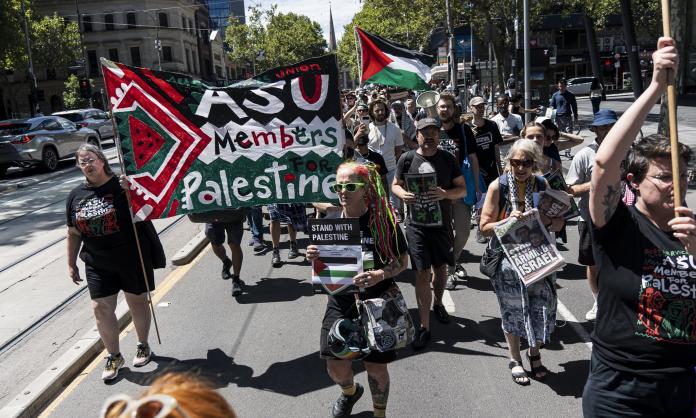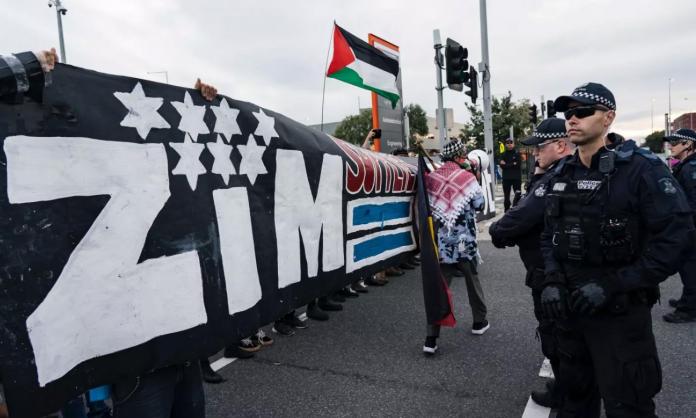“On the day of my mother’s funeral, I went home and wrote reports”, Kate says. She’s a public high school teacher and, along with 50,000 others, many also from Catholic schools, she’s striking to demand better pay and reduced workloads from the New South Wales government.
“I am working two to three hours a night on top of what I do in a day, and that’s probably less than average for teachers”, says another public high school teacher, also called Kate.
Teachers are burdened with mountains of administrative work beyond their key responsibility of teaching and learning. This is the third public school strike, and the second for Catholic teachers, in seven months.
“Our primary job is to teach, not do admin. We are doing [Education Minister] Sarah Mitchell’s job”, says Jen, who’s attended all the strike rallies of the campaign so far. The Kates nod in agreement.
Staff shortages, compounded by sickness due to COVID and the flu, are resulting in hundreds of classes being merged daily across the state. Students are then being supervised instead of receiving lessons.
“All this squeezing is actually squeezing people out of the profession”, says Mark, who teaches in the public sector. “It is emotionally, physically and spiritually unsustainable. It hurts me to see my colleagues work to exhaustion.”
Catholic and public sector teachers are striking together for the first time in 25 years. Thousands wearing yellow Independent Education Union shirts have joined the public school teachers decked out in Teachers Federation red in front of the state parliament.
Catholic school teachers’ pay is pegged to the public sector teachers’, making joint action an important step to increase the pressure on the government to meet the union’s demands.
Pay has become an increasingly prominent part of the campaign for both unions. The government has offered a measly 3 percent per year increase—a real wage cut—and has no intention to address teacher shortages.
“Teachers are not doing this as a joke, this is bread and butter for us, we can’t get a loan at the bank”, Jen says.
“We want remuneration at the rate of the work we do”, says Brenda, who works in a special needs school in the Catholic system. “We deserve recognition of the work we do for society and future generations.”
The government says that it will introduce performance pay to “reward” teachers for increased productivity. There’s disgust at the suggestion. When Teachers Federation President Angelo Gavrielatos mentions performance pay from the front of the rally, teachers jeer and boo.
“Teachers are performing above and beyond the call of duty every single day. They’re just not paid for it”, Gavrielatos says.
Workers from across the public sector have been on strike in recent weeks. On Tuesday, nurses and midwives called stoppages to attend a mass members meeting, which voted to raise the union wage claim to 7 percent per year. Public servants also took 24-hour strike action earlier in June.
An annual wage cap of 2.5 percent (now lifted to 3 percent) has been imposed on public sector workers since 2011, a restriction that unions are challenging. Joint industrial action between public sector unions would put real pressure on the government to abolish the cap entirely.
“Teachers, like all workers, need to be involved in all kinds of industrial action and cause the maximum of pain to government and employers”, another teacher says. “Don’t rely on the government to give it to you. Use your industrial might and your power to get any measure of wage justice. Right now, wages are well below the cost of living. It’s only by being united we can take action.”
Despite the exhaustion, there is still determination among teachers at the rally to keep striking for our demands. Jen has no doubt this is the way forward. She’s been a member of the union and a teacher for long enough to know the government isn’t on our side.
“By striking we are showing the future generation that this is the way to go”, she says. “You have to fight for it.”









